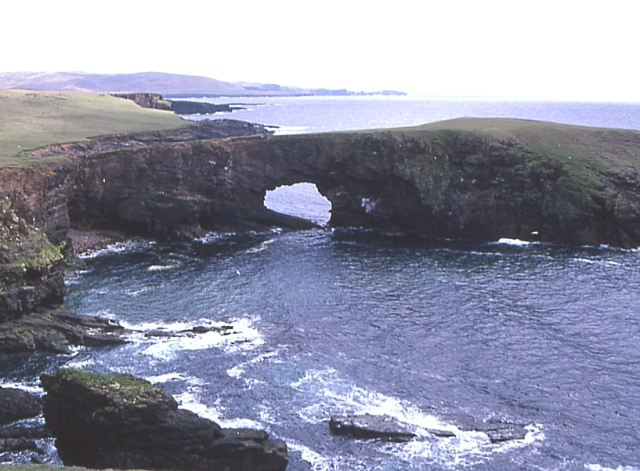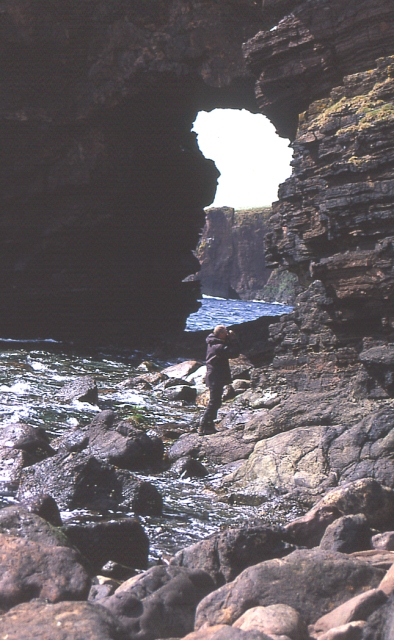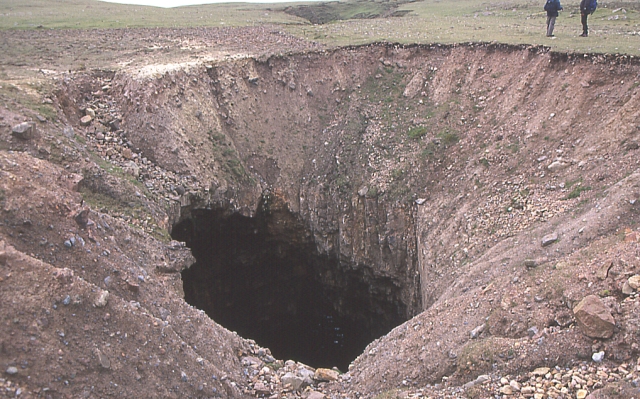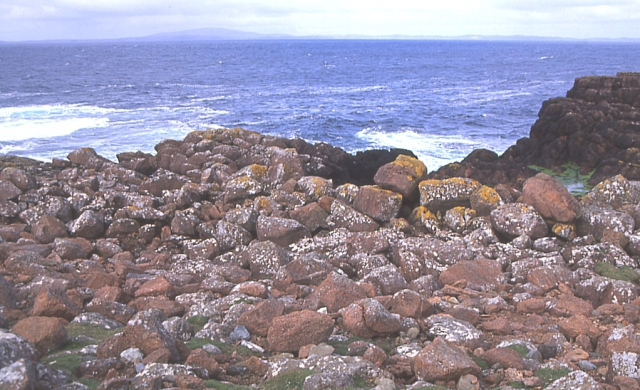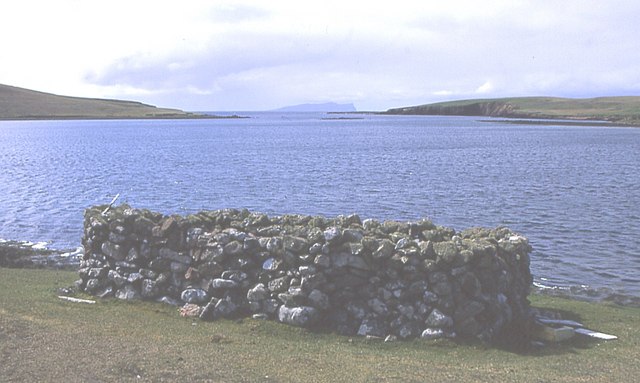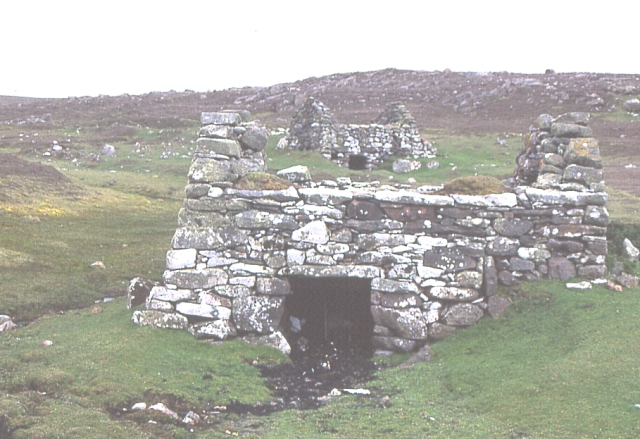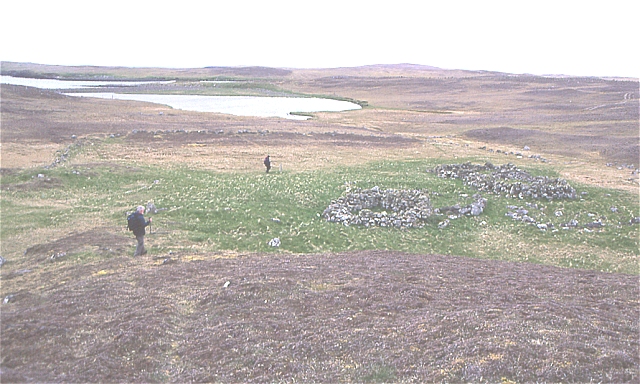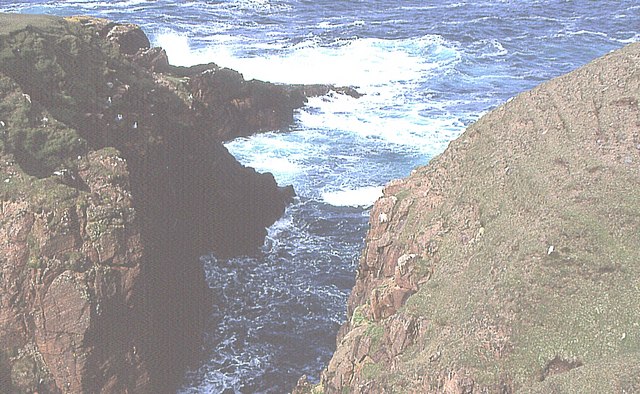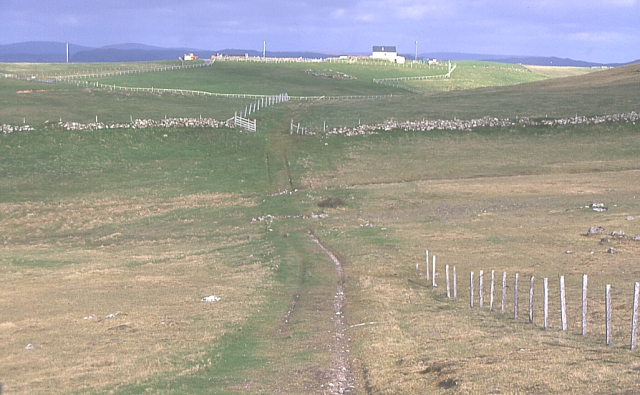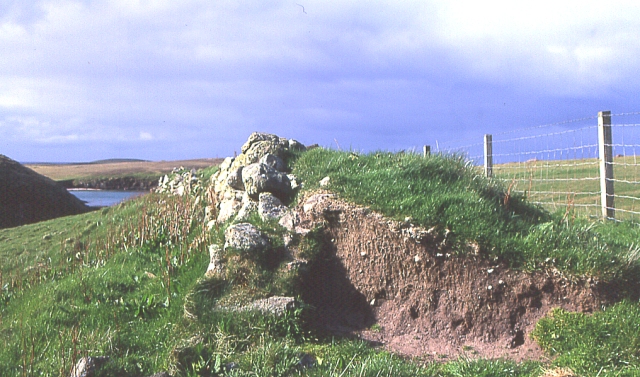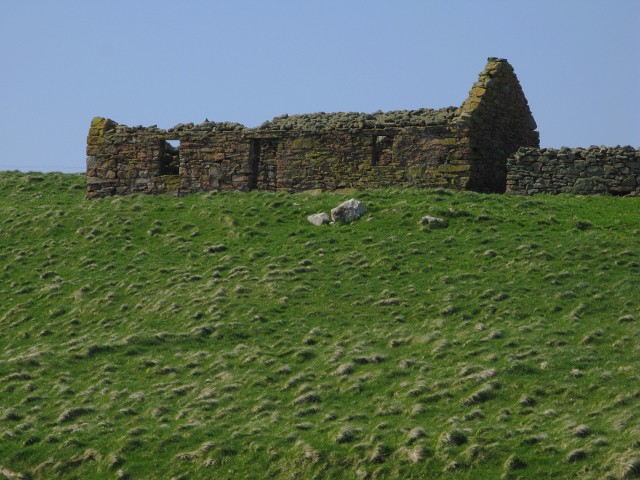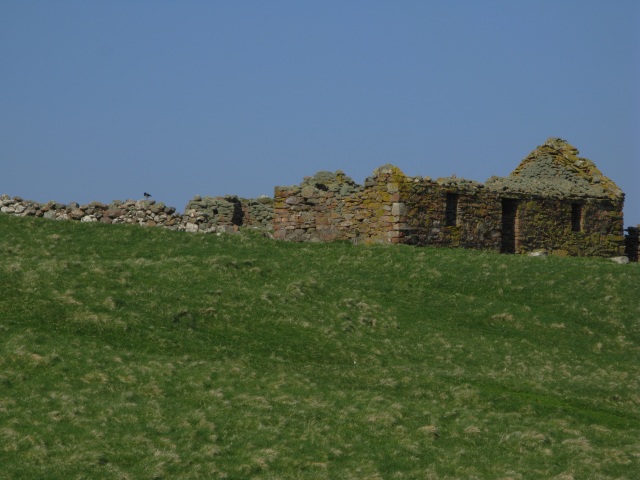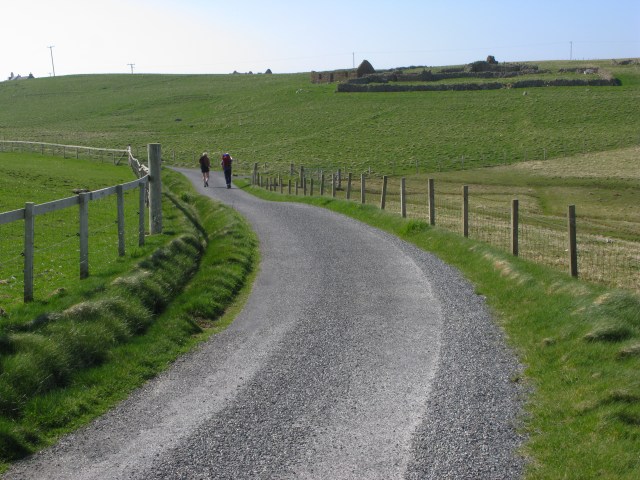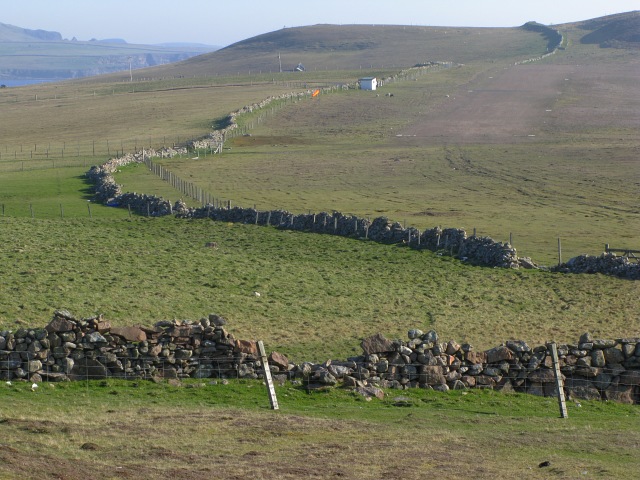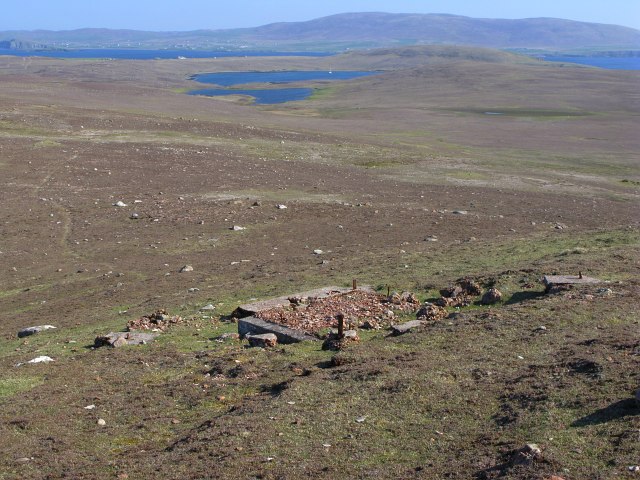Loch of Sholmawick
Lake, Pool, Pond, Freshwater Marsh in Shetland
Scotland
Loch of Sholmawick
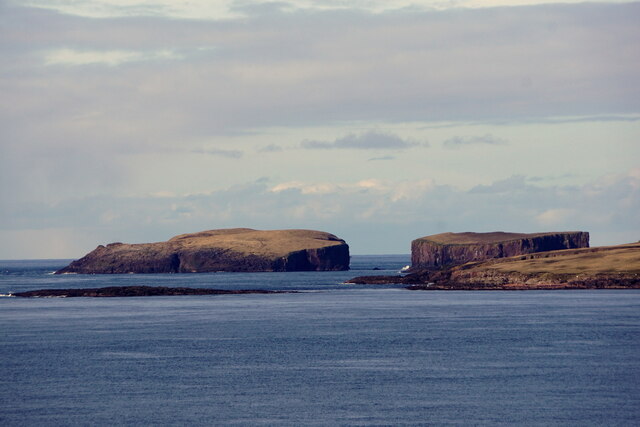
Loch of Sholmawick is a small freshwater body located in the Shetland Islands, Scotland. Situated in the southwestern part of the Mainland, it is nestled amidst lush greenery and rolling hills, offering a serene and picturesque setting.
Covering an area of approximately 10 acres, the loch is relatively shallow, with an average depth of around 3 meters. It is surrounded by marshy vegetation and reed beds, creating a unique habitat for a variety of plant and animal species.
The water in Loch of Sholmawick is crystal clear and fed by small streams that flow down from the surrounding hills. It is home to a diverse range of freshwater fish, including brown trout and Arctic char, making it a popular spot for anglers seeking a tranquil fishing experience.
The surrounding marshland provides a haven for various bird species, making it an ideal location for birdwatching enthusiasts. Visitors may catch a glimpse of wading birds such as curlews and redshanks, as well as ducks and geese that frequent the loch.
The picturesque landscape surrounding Loch of Sholmawick also attracts nature lovers and photographers, who can capture the reflection of the hills and sky in the calm waters of the loch.
Accessible by a small track, the loch offers a peaceful and secluded environment, away from the hustle and bustle of urban life. Whether it is for fishing, birdwatching, or simply enjoying the tranquility of nature, Loch of Sholmawick is a hidden gem that offers a taste of the natural beauty found in the Shetland Islands.
If you have any feedback on the listing, please let us know in the comments section below.
Loch of Sholmawick Images
Images are sourced within 2km of 60.338058/-1.7093114 or Grid Reference HU1661. Thanks to Geograph Open Source API. All images are credited.
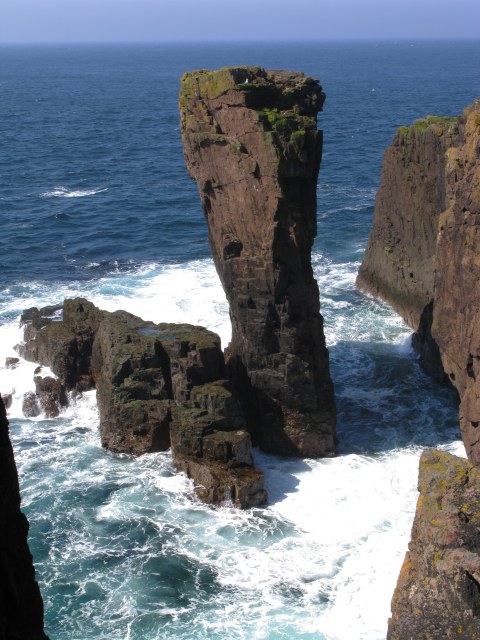
Loch of Sholmawick is located at Grid Ref: HU1661 (Lat: 60.338058, Lng: -1.7093114)
Unitary Authority: Shetland Islands
Police Authority: Highlands and Islands
What 3 Words
///tall.myths.clinking. Near Walls, Shetland Islands
Related Wikis
Papa Stour
Papa Stour (Scots: Papa Stour) is one of the Shetland Islands in Scotland, with a population of under fifteen people, some of whom immigrated after an...
Biggings
Biggings is a village on the island of Papa Stour, in Shetland, Scotland. Papa Stour's church is situated at the south of Biggings. A homestead of Duke...
Papa Stour Airstrip
Papa Stour Airstrip is a small airstrip in the village of Biggings on the island of Papa Stour. Shetland, Scotland. == History == Papa Stour Airstrip opened...
Maiden Stack
The Maiden Stack or Frau Stack is a tiny stack in the western Shetland Islands to the north of Brei Holm and east of Housa Voe in Papa Stour. It is so...
Brei Holm
Brei Holm is a tiny tidal islet in the western Shetland Islands. It is due east of Papa Stour, to which it is connected at low tide, just outside Housa...
Forewick Holm
Forewick Holm is a 1-hectare (2.5-acre) island in the Sound of Papa in the Shetland islands, Scotland. Located between Papa Stour and the Sandness peninsula...
Sandness
Sandness (the "d" is not pronounced locally) is a headland and district in the west of Shetland Mainland, Scotland. Sandness was a civil parish, which...
Ve Skerries
The Ve Skerries or Vee Skerries (Old Norse: Vestan sker, West Skerries) are a group of low skerries (rocky islands) three miles (4.8 km) north west of...
Have you been to Loch of Sholmawick?
Leave your review of Loch of Sholmawick below (or comments, questions and feedback).
